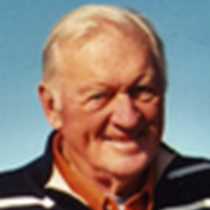While slowly nudging the Astoria wharf this morning, Pacific winds and gentle rain accompanied the ship’s progress. As skies brightened, THE Columbia River Maritime Museum loomed nearby. The guests soon entered the Museum, which opened in 1962, where six galleries, a Great Hall, and the antique Lightship Columbia awaited. The Museum’s interactive exhibits combined river history and technology, understandable to all.
After two hours in the Museum, guests boarded motor coaches for a narrated tour of the charming town of Astoria en route to Fort Clatsop, winter home of the Lewis & Clark Corps of Discovery, 1805-1806. On February 7, 1806, Meriwether Lewis described his dinner “a marrowbone a piece a brisket of boiled Elk that had the appearance of a little fat on it. This, for Fort Clatsop, is living in high style.” While Clark drew maps and sketched local natives, flora and fauna, Lewis furiously wrote in the journals. After three soaking months in the Oregon rainforest the Corps dipped their paddles and headed up the Columbia River to the United States.
Mid-afternoon a motor coach ferried guests up Coxcomb Hill. This prominence provides a 180-degree view of the river’s mouth, the formidable Columbia bar, the coasts of Oregon and Washington, and several nearby natural monuments such as Tillamook Head and Saddle Mountain. Despite overcast skies, the historian pointed out features of this historic western post. Several guests climbed the 164 steps of the Astoria Column. This tower, modeled after Emperor Trajan’s victory column in the Roman Forum, commemorates the region’s history and location as a terminus of the Corps, Astor’s parties (1811), the Oregon Trail (1840s-1860s) and the railroads (1880s). Trees and birds were identified, bridges and waterways described, and a fruitless effort was made to spot a local herd of wild elk.
While the skipper guided the Sea Lion westward in an effort to see the Columbia’s mouth, an ebb tide and relentless river water tipped brightly painted buoys on their side. This last look at the river before heading upstream brought to mind Woody Guthrie’s famous song from the 1940s, “Roll On, Columbia, Roll On.”
After two hours in the Museum, guests boarded motor coaches for a narrated tour of the charming town of Astoria en route to Fort Clatsop, winter home of the Lewis & Clark Corps of Discovery, 1805-1806. On February 7, 1806, Meriwether Lewis described his dinner “a marrowbone a piece a brisket of boiled Elk that had the appearance of a little fat on it. This, for Fort Clatsop, is living in high style.” While Clark drew maps and sketched local natives, flora and fauna, Lewis furiously wrote in the journals. After three soaking months in the Oregon rainforest the Corps dipped their paddles and headed up the Columbia River to the United States.
Mid-afternoon a motor coach ferried guests up Coxcomb Hill. This prominence provides a 180-degree view of the river’s mouth, the formidable Columbia bar, the coasts of Oregon and Washington, and several nearby natural monuments such as Tillamook Head and Saddle Mountain. Despite overcast skies, the historian pointed out features of this historic western post. Several guests climbed the 164 steps of the Astoria Column. This tower, modeled after Emperor Trajan’s victory column in the Roman Forum, commemorates the region’s history and location as a terminus of the Corps, Astor’s parties (1811), the Oregon Trail (1840s-1860s) and the railroads (1880s). Trees and birds were identified, bridges and waterways described, and a fruitless effort was made to spot a local herd of wild elk.
While the skipper guided the Sea Lion westward in an effort to see the Columbia’s mouth, an ebb tide and relentless river water tipped brightly painted buoys on their side. This last look at the river before heading upstream brought to mind Woody Guthrie’s famous song from the 1940s, “Roll On, Columbia, Roll On.”




